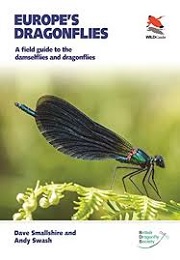Europe’s Dragonflies - A Field Guide to the Damselflies and Dragonflies

Dave Smallshire and Andy Swash
Princeton University Press, £25.00
This addition to the WILDGuides series of photographic field guides is a book that anyone with an interest in dragonflies or damselflies will find difficult to put down. For those who aren’t yet particularly enamoured with these marvellous creatures, even a cursory flick through this lavishly illustrated guide will reveal many places you feel compelled to stop.
The pages are full of well-annotated images, clearly showing the features of each species, differences between the sexes and immature forms, as well as indicating any other similar species. The beautiful photographs show fine details of anatomy and, where appropriate, there are additional close-up or clearly drawn diagrams to illustrate really fine detail.
Each of the 140 resident or vagrant species recorded in Europe are given a double-paged spread, which includes an illuminating range of photographs, detailed identification tips, notes about their behaviour and breeding habitats, their conservation status and a map showing geographical distribution. Some species are found widely across Europe, so the book could be used just within the UK, whereas other species are far more localised, for example the Cretan bluet is endemic to its island namesake.
A concise introduction at the beginning describes the key features of damselflies and dragonflies, both structural and behavioural. Some technical terms are used, but only when necessary and are explained for the non-specialist. Further information, including on their conservation, is found at the end of the book.
This guide should satisfy both seasoned professionals and those essentially discovering these extraordinary insects for the first time. The book is perhaps a little too large to be described as ‘pocket-sized’ but is certainly robust enough to be taken into the field. However, its attractive presentation means it would also not look out of place on your coffee table.
Mike Smith FRSB


